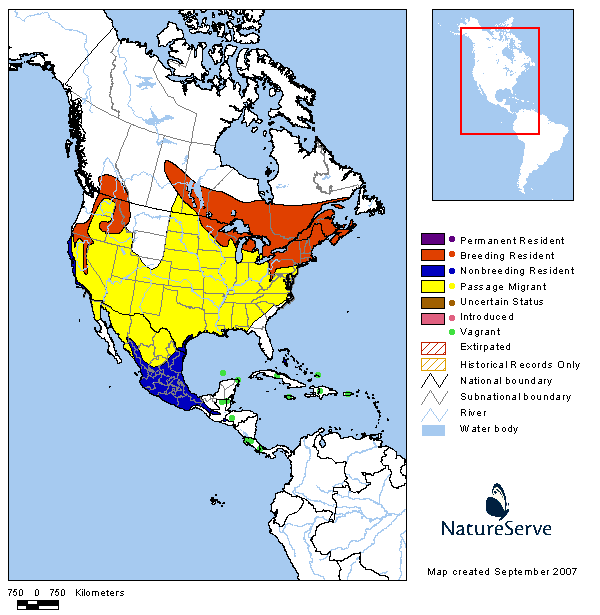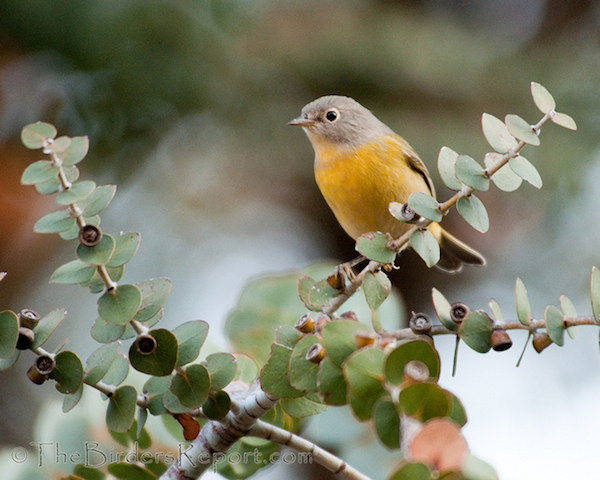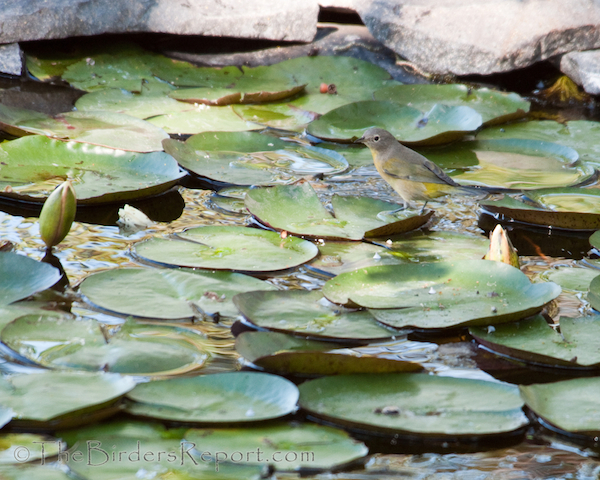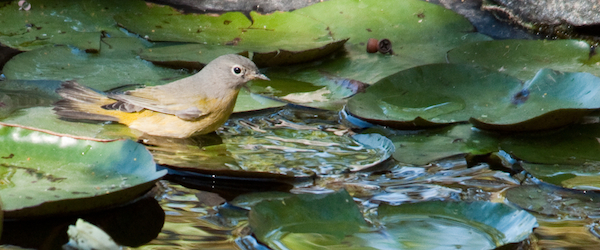Nashville Warbler (Oreothlypis ruficapilla ridgwayi) photos by Larry Jordan
I have been enjoying some first time visitors to my yard this fall, including several warblers, one of which is the western Nashville Warbler (Oreothlypis ruficapilla ridgwayi). Click on photos for full sized images.
Their are two separate subspecies of the Nashville Warbler, one occurs east of the Mississippi River (Oreothlypis ruficapilla ruficapilla) and the other, pictured here, formerly called the Calaveras Warbler (Oreothlypis ruficapilla ridgwayi) in northwestern United States and adjacent Canada.
Like many warblers the Nashville Warbler breeds in North America and winters in Mexico. I feel rather fortunate having this visitor to my yard as Birds of North America Online states that they are an “uncommon fall migrant in California” usually in August and September.

I am even more pleased that he or she thought that my water feature was the best looking environment to take a brief respite from that migration and take a leisurely bath.
I hope you are located somewhere where you have access to the fall warbler migration. Here’s a short video of the Nashville Warbler taking that bath.
httpv://youtu.be/8e1fl3oD_-Y
Enjoy it while you can!




















very handsome little bird! 🙂
That’s a super little bird. Not one I’ve come across before. Lovely bright yellow colour.
Great bird! Great photos!
Super series of a species I’ve not yet seen.
Lovely photos of a sweet little bird.
What a smashing bird Larry – more distinct with the yellow belly than the Tennessee Warbler. Nice images mate
I want to take a bath on a lily pad.
Great post, images, and video!